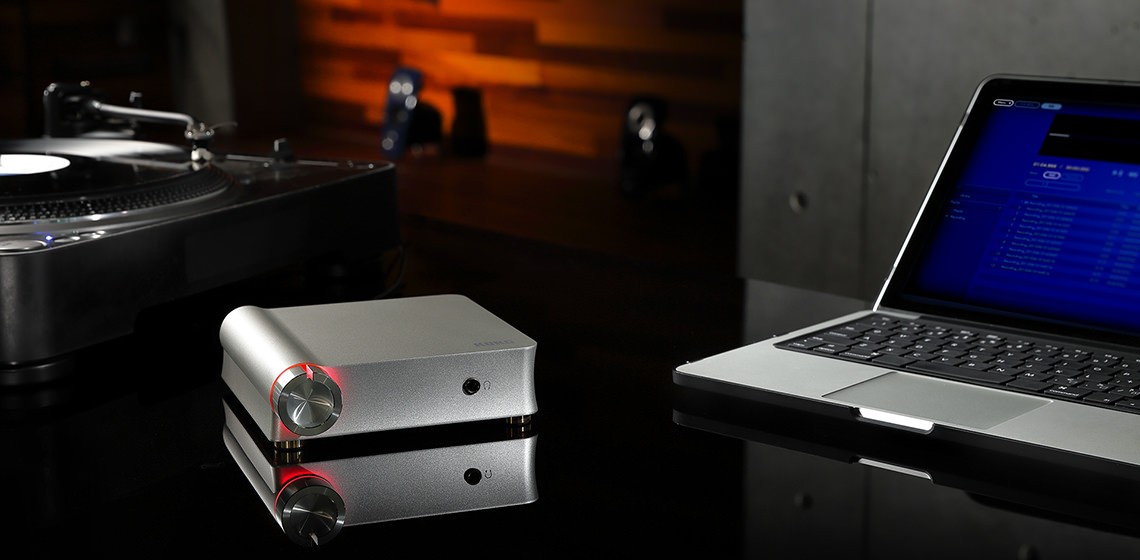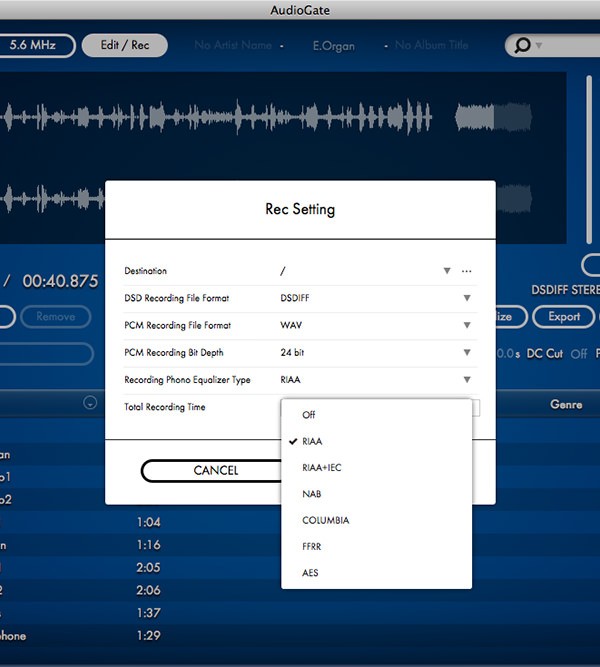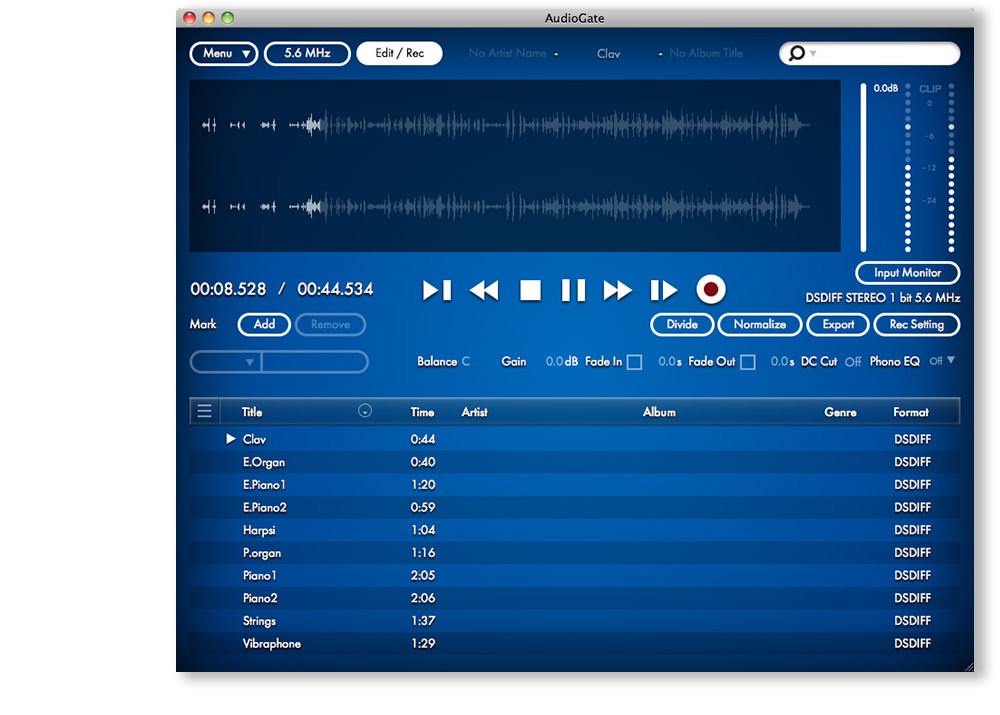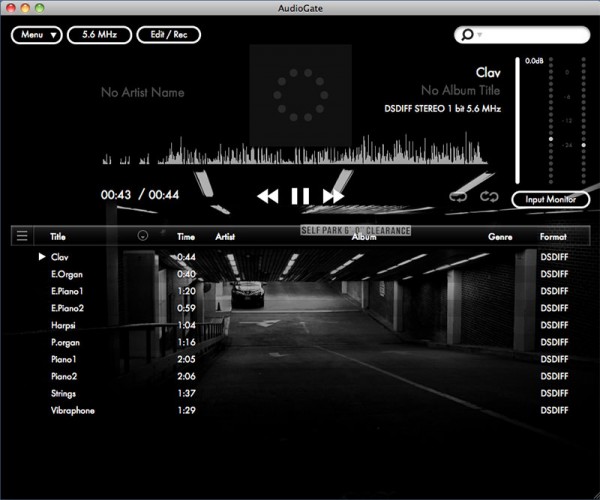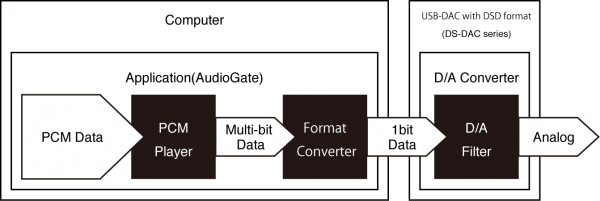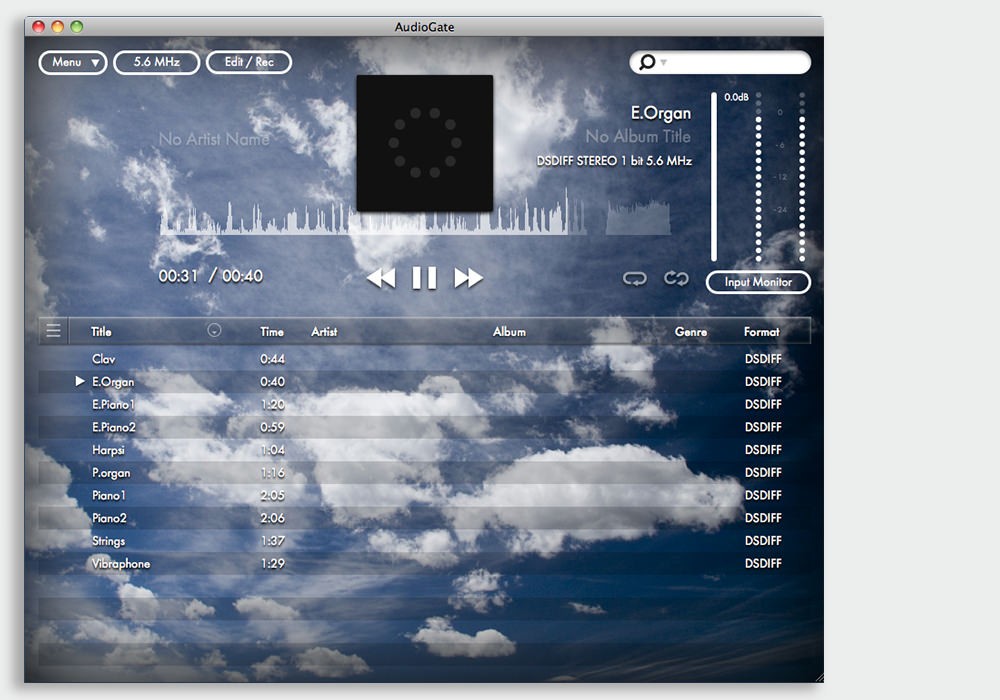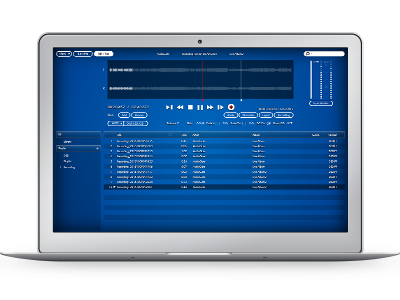AudioGate 4 now includes the ability to create high-resolution audio recordings. Simply install AudioGate 4 on your PC, and then connect it to the KORG DS-DAC-10R using a single USB cable. The DS-DAC-10R supports the 5.6 MHz and 2.8 MHz DSD format—for playback and recording—as well as PCM formats up to 192 kHz/24-bit. What had been the foremost high-resolution audio playback system has evolved to provide the effective system for creating high-resolution audio recordings. (*1)
Now you no longer have to wait for your favorite music as a high-resolution release; create DSD-recordings of your own sources and listen to great sound—anywhere, anytime you like.
*1. DSD recording is supported in conjunction with DS-DAC series units equipped with an AD converter (currently, only the DS-DAC-10R). Previous models of the DS-DAC series do not support recording functionality.
